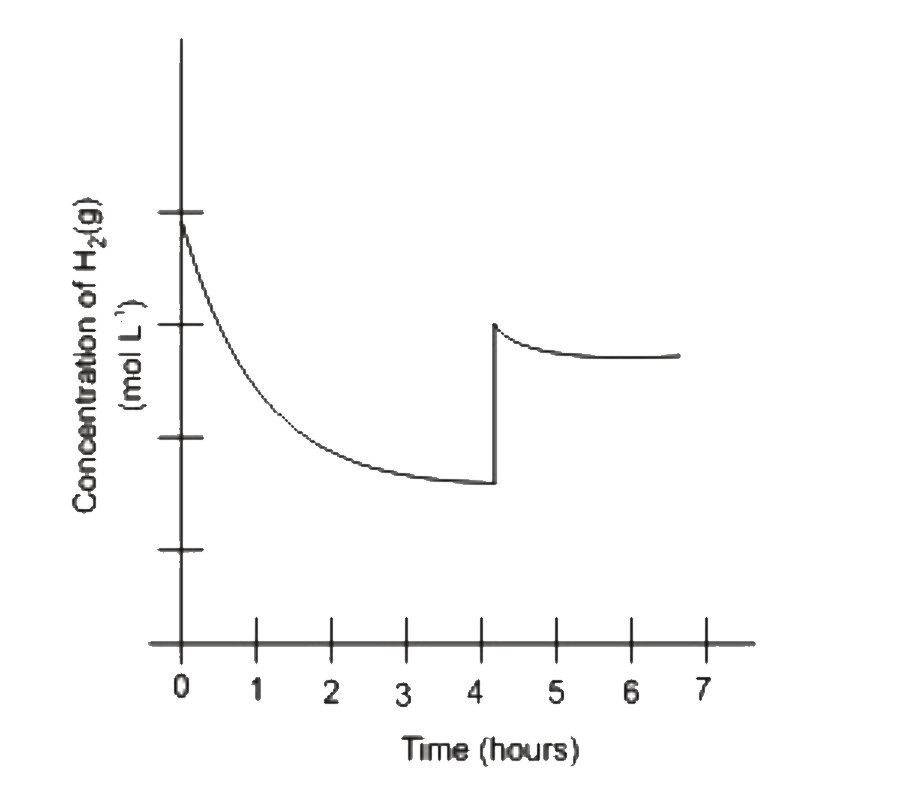100mL of phosphine (PH3) on hearing forms phosphorous (P) and hydrogen (H2). The volume change in the reaction is
an increase of 50mL
an increase of 100mL
an increase of 150mL
an decrease of 50mL
The correct Answer is:A
4PH3(g)4mol4mL→P4(s)+6H2(g)6mol6mL
Volume of H2produced by 100mL PH3=64×100=150mL
Thus, there is an increase in an increase of 50mL
Topper's Solved these Questions
- BOOK - OP TANDONCHAPTER - STOICHIOMETRY (CHEMICAL FORMULAE AND EQUATIONS )EXERCISE - Practical Problems23videos
STOICHIOMETRY (CHEMICAL FORMULAE AND EQUATIONS )
- BOOK - OP TANDONCHAPTER - STOICHIOMETRY (CHEMICAL FORMULAE AND EQUATIONS )EXERCISE - OBJECTIVE QUESTIONS (LEVEL-A)63videos
STOICHIOMETRY (CHEMICAL FORMULAE AND EQUATIONS )
- BOOK - OP TANDONCHAPTER - STOICHIOMETRY (CHEMICAL FORMULAE AND EQUATIONS )EXERCISE - SELF ASSESSMENT11videos
STOICHIOMETRY (CHEMICAL FORMULAE AND EQUATIONS )
- BOOK - OP TANDONCHAPTER - SATURATED ALIPHATIC HYDROCARBONSEXERCISE - SINGLE INTEGER ANSWER TYPE QUESTIONS7videos
SATURATED ALIPHATIC HYDROCARBONS
- BOOK - OP TANDONCHAPTER - UNSATURATED HYDROCARBONSEXERCISE - SINGLE INTEGER ANSWER TYPE QUESTIONS10videos
UNSATURATED HYDROCARBONS
Similar Questions
If for the reaction 2NH3→N2+3H2 the reaction is started with 2ml of NH3 the total volume of the gases in ml when the reaction is 50% complete will be:
View SolutionThe decomposition of phosphine, PH3, proceeds according to the following equation:
4PH3(g)→P4(g)+6H2(g)
It is found that the reaction follows the following rate equation:
Rate =k[PH3].
The half-life of PH3 is 37.9s at 120∘C.
(i) How much time is required for 3/4th of PH3 to decompose?
(ii) What fraction of the original sample of PH3 remains behind after 1 minute?View Solution
Knowledge Check
- Question 1 - Select One
100mL of phosphine (PH3) on hearing forms phosphorous (P) and hydrogen (H2). The volume change in the reaction is
Aan increase of 50 mlBan increase of 100 mlCan increase of 150 mlDa decrease of 50 ml - Question 2 - Select One
100 mL of PH_(3) on decomposition produced phosphorus and hydrogen. The change in volume is :-
A50 mL increaseB500 mL decreaseC900 mL decreaseDnil - Question 3 - Select One
Phosphine on decomposition produces phosphorus and hydrogen. The change in percentage in volume
A50mlB80mlC900mlD75ml
100 mL of PH3 on decomposition produced phosphorus and hydrogen. The change in volume is
View SolutionPhosphine (PH3) decomposes to produce vapours of phosphorus and H2 gas. What will be the change in volume when 100mL of phosphine is decomposed?
View SolutionThe reaction between phosphorus (P4) and hydrogen (H2) can result in the formation of phosphine (PH3) as shown :
P4(s)+6H2(g)⇔4PH3(g)
The graph shows the change in concentration of hydrogen for this reaction in which the system was distrubed after four hours.

Which of the following could explain the change in hydrogen concentration at time = 4 hours?View SolutionThe decomposition of phosphine [PH3] on tungsten at low pressure is a first-order reaction. It is because the
View SolutionThe decomposition of phosphine [PH3] on tungsten at low pressure is a first-order reaction. It is because the
View Solution

